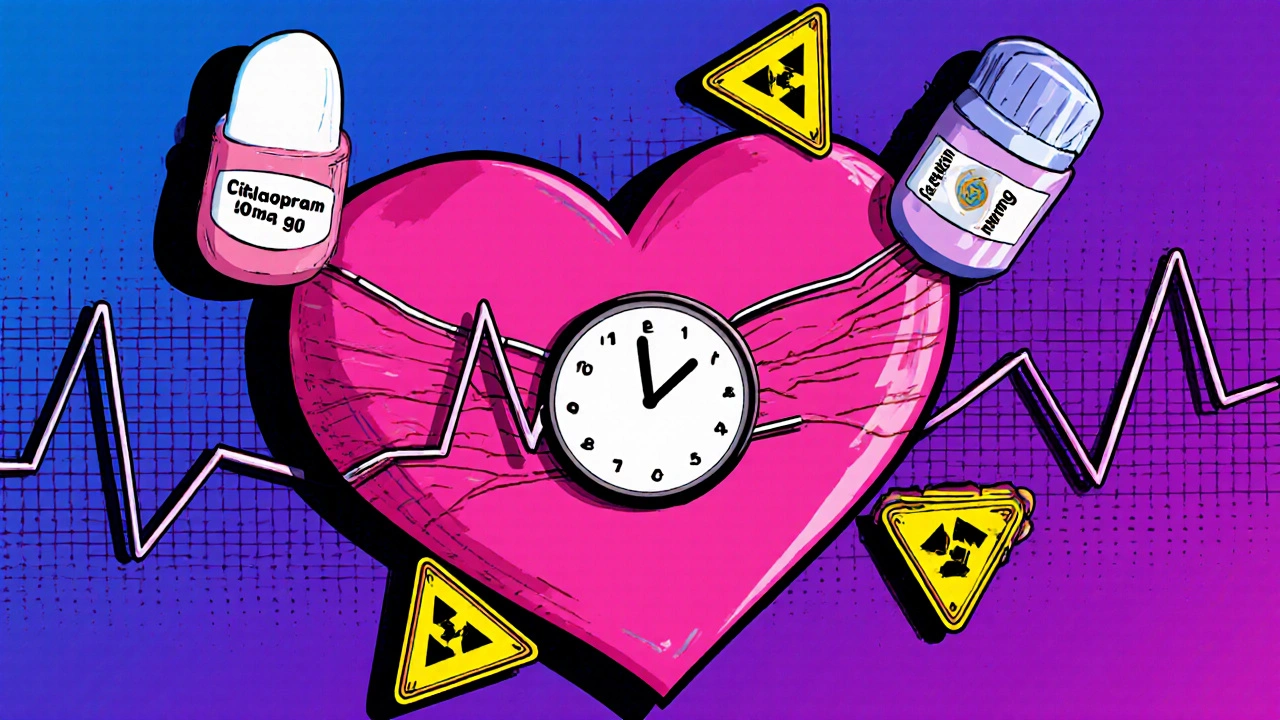Citalopram Safety: What You Need to Know About Side Effects, Interactions, and Proper Use
When you take citalopram, a selective serotonin reuptake inhibitor (SSRI) used to treat depression and anxiety. Also known as Celexa, it helps balance brain chemicals—but it’s not harmless. Misuse or unawareness of risks can lead to serious health problems, especially when mixed with other meds. Many people start citalopram without knowing how it behaves in the body, or what to watch for. That’s why safety isn’t just about taking the pill—it’s about understanding what it can and can’t do alongside everything else you’re using.
One of the biggest dangers is combining citalopram with other drugs that raise serotonin levels. Think migraine meds like triptans, painkillers like tramadol, or even herbal supplements like St. John’s wort. These can trigger serotonin syndrome, a rare but life-threatening condition caused by too much serotonin in the brain. Symptoms include confusion, rapid heartbeat, high fever, and muscle stiffness. It doesn’t happen often, but if you feel off after starting or changing doses, don’t wait—get help fast. Another hidden risk is heart rhythm changes. Citalopram can prolong the QT interval, especially at higher doses or if you already have heart issues. The FDA warns against using more than 40 mg a day, and even less if you’re over 60 or have liver problems. Your doctor should check your heart history before prescribing it.
It’s also not safe for everyone. If you’re pregnant or breastfeeding, citalopram can cross the placenta or enter breast milk. Some studies link it to mild newborn issues like jitteriness or breathing trouble, though many babies are fine. Talk to your doctor if you’re planning a pregnancy or already are—one decision here affects two lives. Older adults are more sensitive to side effects like dizziness or falls, and kids under 18 shouldn’t take it unless closely monitored. And never stop suddenly. Quitting cold turkey can cause withdrawal: brain zaps, nausea, anxiety, even suicidal thoughts. Tapering down slowly under medical care makes all the difference.
You’ll find posts here that dig into real-world cases: how citalopram interacts with common painkillers, why some people get worse before they get better, and what to do if you’re on multiple meds. There’s also info on how it compares to other SSRIs, what blood tests might help track safety, and how to spot early warning signs before things get serious. This isn’t theoretical—it’s what people actually experience. Whether you’re just starting out, been on it for years, or helping someone who is, the goal is the same: keep you safe while you heal.
Citalopram and Escitalopram: QT Prolongation Risks and Safe Dose Limits
Citalopram and escitalopram can prolong the QT interval, raising heart rhythm risks. Learn the safe dose limits, who's most at risk, and how these SSRIs compare to other antidepressants for cardiac safety.
